Issue Archive
Table of Contents
BLOOD COMMENTARIES
BLOOD SPOTLIGHT
What is the future of immunotherapy in multiple myeloma?
In this Blood Spotlight, Rasche and colleagues present the state of the art of immunotherapy for multiple myeloma. They discuss the role of monoclonal antibodies that are part of the new backbone of myeloma therapy and the promise of future T-cell therapies, looking toward a future for a potential cure of the disease with chemotherapy-free regimens.
REVIEW ARTICLES
Identifying potential germline variants from sequencing hematopoietic malignancies
Clinical Trials & Observations
Kraft and Godley review the approach to diagnosing germline cancer disposition, through historical clues and through interpretation of next-generation sequencing that may indicate germline mutations. They further discuss the impact on germline predisposition syndromes on treatment and hematopoietic stem cell transplant.
How to manage CML patients with comorbidities
Cortes reviews considerations for tyrosine kinase inhibitor choice for patients with underlying secondary morbidities, including cardiovascular disease, renal dysfunction, pleural effusion, and glucose intolerance.
CLINICAL TRIALS AND OBSERVATIONS
Carfilzomib, lenalidomide, and dexamethasone plus transplant in newly diagnosed multiple myeloma
Clinical Trials & Observations
The authors present a multicenter phase 2 trial of carfilzomib, lendalidomide, and dexamethasone (KRd), followed by autologous stem cell transplant and maintenance KRd in previously untreated patients with multiple myeloma. They report excellent long-term outcomes with high rates of complete remission that deepen with time.
GENE THERAPY
Activity of transgene-produced B-domain–deleted factor VIII in human plasma following AAV5 gene therapy
Rosen and colleagues compared factor VIII level determination by one-step assay versus chromogenic assay and demonstrated that the 2 assays are discrepant, especially when measuring transgenic factor VIII following gene therapy. While both recombinant subcutaneous factor VIII and recombinant factor VIII yield similar results by chromogenic assay, the 1-step assay tends to show higher activity when measuring transgenic factor VIII.
HEMATOPOIESIS AND STEM CELLS
Activation of the receptor tyrosine kinase RET improves long-term hematopoietic stem cell outgrowth and potency
Neuronal signals have been implicated in hematopoietic stem cell (HSC) proliferation. Grey and colleagues demonstrated that HSCs are enriched for expression of RET, a receptor tyrosine kinase activated by glial-derived neurotrophic factor, and that activation of RET improves HSC expansion and transplant potential. This pathway holds promise for promoting ex vivo HSC expansion for stem cell transplantation.
LYMPHOID NEOPLASIA
Prediction and prevention of central nervous system relapse in patients with extranodal natural killer/T-cell lymphoma
Extranodal natural killer (NK) T-cell lymphoma is a rare Epstein-Barr virus–positive non-Hodgkin lymphoma. Central nervous system (CNS) relapse is rare but has a terrible prognosis, leading to efforts to identify predictive factors for CNS recurrence. The authors demonstrate that CNS relapse can be predicted by a modification of the prognostic index of natural killer lymphoma score based on the number of extranodal sites. Prophylaxis with intermediate-dose methotrexate may decrease CNS relapse.
PHAGOCYTES, GRANULOCYTES, AND MYELOPOIESIS
β-Catenin–TCF/LEF signaling promotes steady-state and emergency granulopoiesis via G-CSF receptor upregulation
Danek et al demonstrated a role for the canonical Wnt signaling pathway in regulating steady-state and emergency granulopoiesis. The signaling pathway is mediated by interaction between β-catenin and the TCF/LEF transcription factors; mice with a dominant negative form of TCF4 that abrogates this interaction are neutropenic and have reduced neutrophil maturation. The authors confirmed that this is mediated through downregulation of neutrophil-specific gene expression, notably the G-CSF receptor.
LETTERS TO BLOOD
Waning of SARS-CoV-2 RBD antibodies in longitudinal convalescent plasma samples within 4 months after symptom onset
Perreault and colleagues examined antibody titers in sequential samples from serum donors recovering from COVID-19 and demonstrated that antibody titers fall over 3-4 months. These results have important implications for convalescent serum collection and seroprevalence studies.
MPN patients with low mutant JAK2 allele burden show late expansion restricted to erythroid and megakaryocytic lineages
BLOOD WORK
-
Cover Image
Cover Image
![issue cover]()
May-Grünwald-Giemsa–stained cytospins from semisolid cultures demonstrating reduced neutrophilic differentiation in cells with inactive β-catenin–TCF/LEF. Immature cells have a large nucleus and dark-blue cytoplasm. A few normal-appearing neutrophils with ring-shaped nuclei are also present. See the article by Danek et al on page 2574.
- PDF Icon Front MatterFront Matter
- PDF Icon Table of ContentsTable of Contents
- PDF Icon Editorial BoardEditorial Board
Advertisement intended for health care professionals
Email alerts
Advertisement intended for health care professionals


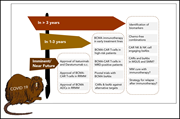
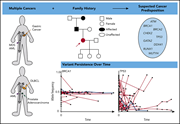


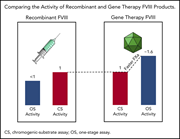

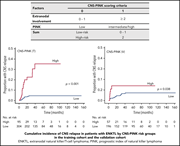

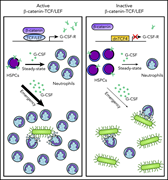

Gene-produced FVIII: measure for measure